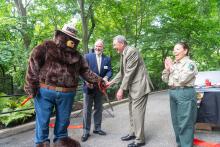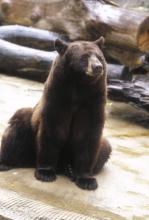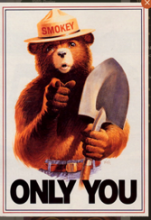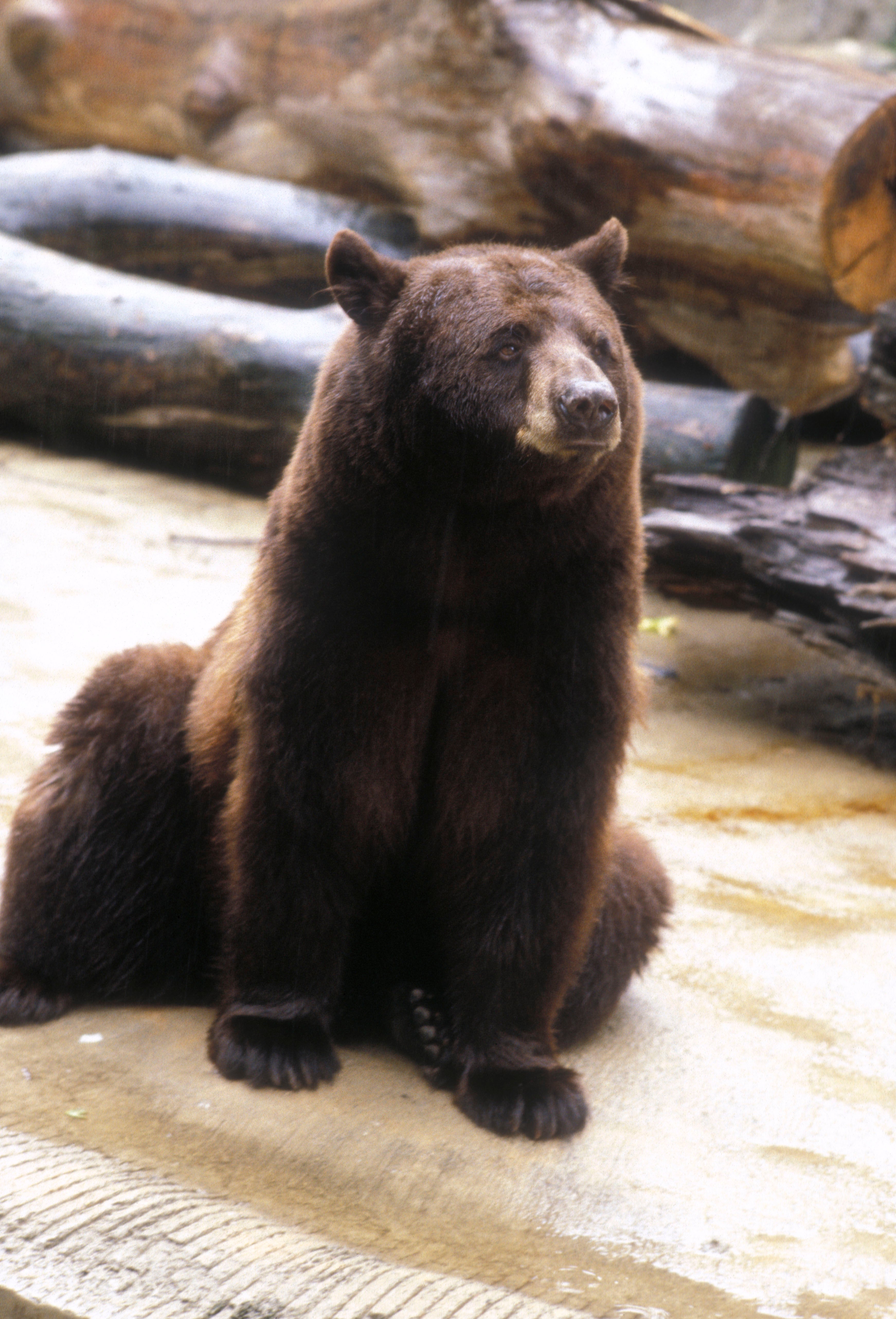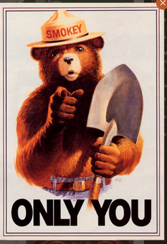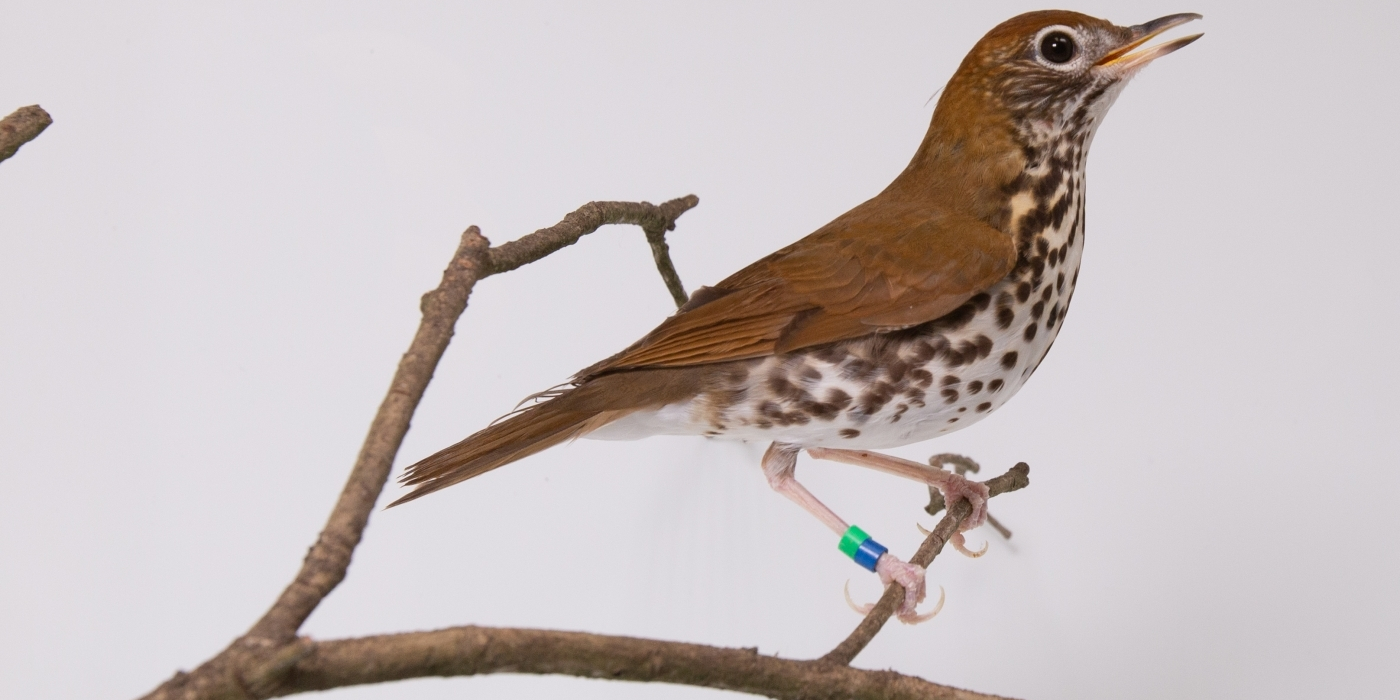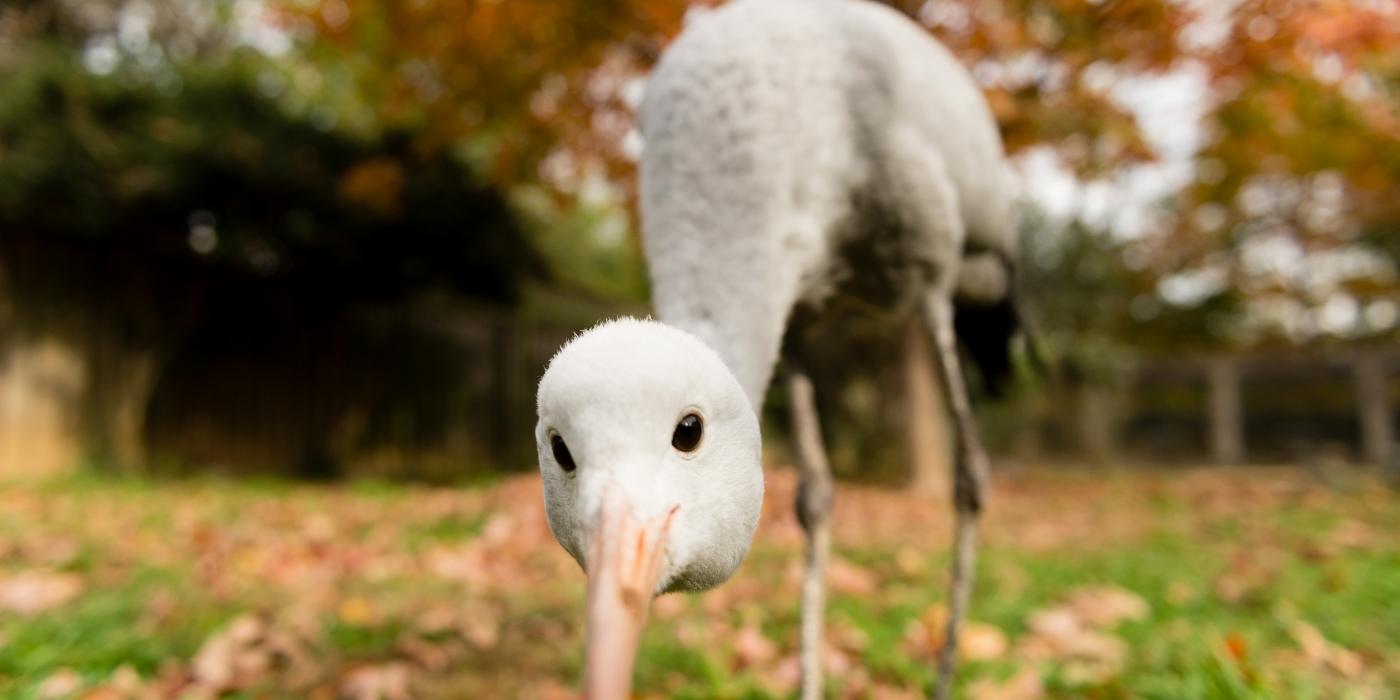Smokey Bear Exhibit Opens at Smithsonian’s National Zoo
A new Smokey Bear outdoor exhibit opened at Smithsonian’s National Zoo today, May 23, inviting visitors to look back in time to the mid-20th century, when a badly burned black bear cub was rescued from a devastating forest fire and placed under the Zoo’s care. Archival photographs and 14 colorful posters line the pathway in front of Smokey Bear’s former habitat, teaching visitors about his legacy as an ambassador for wildfire prevention and wildlife conservation. The entrance, located near Lemur Island, is marked by a 6-foot-tall statue of the iconic character that shares his name. This exhibit was made possible by the U.S. Department of Agriculture’s Forest Service, which is celebrating 75 years of the character’s campaign to reduce the incidences of human-caused fires.
“I can think of no one better to tell the tale of how humans and nature are inextricably linked than our very own Smokey Bear,” said Steve Monfort, John and Adrienne Mars Director of the Smithsonian’s National Zoo and Conservation Biology Institute. “His story is truly inspirational, and even though decades have passed since Smokey Bear lived here, the message of his infamous character — protecting animals and their habitats — is timeless. We hope visitors come away with a deeper understanding of the Smithsonian’s role in helping the global community protect these critical ecosystems through our forest fire ecology research."
As visitors stroll through the exhibit, they will see the rich stories of Smokey Bear the character and Smokey Bear the Zoo resident take shape. A series of colorful posters line the pathway, including a reproduction of the 1944 artwork that launched the Smokey Bear Wildfire Prevention campaign. That year, the United States began a national wildfire prevention campaign to protect forest resources during World War II. The Cooperative Forest Fire Prevention Committee chose a powerful yet friendly bear to speak for the forests. Posters show Smokey’s character through the decades, offering friendly tips on the proper way to extinguish campfires and advice on how to be a good steward of the environment. Several of the iconic Smokey posters, created by Forest Service artist Rudy Wendelin, helped shape the public identity of this beloved character.
Complementing this outdoor gallery are bilingual panels in English and Spanish highlighting the real Smokey Bear’s story and the Smithsonian Conservation Biology Institute’s (SCBI) forest ecology research. In 1950, a black bear cub was found clinging to a tree in Lincoln National Forest in New Mexico after a devastating forest fire. At the time, he was estimated to be 3 months old. The cub was dubbed “Smokey Bear,” inspired by the Smokey Bear Wildfire Prevention campaign. After receiving treatment for wounds to his paws and hind quarters, Smokey was flown to Washington, D.C., where he became one of the most famous residents in the Zoo’s 130-year history.
As the campaign grew, Smokey Bear became a star and a must-see animal at the Zoo. Children sent the Zoo thousands of letters addressed to Smokey pledging their support for his junior rangers program. The volume of letters was so great that the United States issued Smokey Bear his own ZIP code — an honor bestowed only to him and the President of the United States. Although Smokey Bear the Zoo resident died in 1976, the character lives on through the campaign. His message — “Only You Can Prevent Wildfires” — is as relevant today as it was 75 years ago.
To study how species interact with their environment and track how ecosystems respond to global changes — including wildfires — scientists at SCBI’s Conservation Ecology Center develop new and advanced analytical tools. At the species level, SCBI scientists integrate intensive field surveys with animal tracking and satellite mapping to better understand the processes that control species movement and habitat declines. On a global scale, SCBI partners with networks such as Virginia Working Landscapes, Forest Global Earth Observatory (ForestGEO) and National Ecological Observatory Network (NEON) to develop new analytical and statistical frameworks for data analysis to answer critical conservation questions. Using this technology, SCBI scientists create conservation scenarios that help practitioners and decision makers identify strategies for preserving ecosystem health and biodiversity.
For more information about the Smokey Bear exhibit, visit the Zoo’s website. Follow the Zoo on Facebook, Twitter and Instagram for the latest updates regarding animal and exhibit news.
># # #
Photo 1: Following remarks, Smokey Bear; Steven Monfort, John and Adrienne Mars Director, Smithsonian’s National Zoo and Conservation Biology Institute; Jim Hubbard, Under Secretary for Natural Resources and Environment at the U.S. Department of Agriculture; and Patti Hirami, Acting Deputy Chief, State and Private Forestry at the Forest Service, cut a ribbon and welcome guests into the Zoo’s Smokey Bear exhibit. Credit: Skip Brown, Smithsonian’s National Zoo
Photo 2: The real Smokey Bear in his exhibit at the Smithsonian’s National Zoo. He lived at the Zoo from 1950 to 1976. Credit:Jessie Cohen, Smithsonian’s National Zoo
Photo 3: A 1984 poster features Smokey Bear the character and part of his famous catchphrase, “Only You Can Prevent Forest Fires.” Following a series of devastating wildfires in 2001, this slogan was changed to “Only You Can Prevent Wildfires.” Credit: Special Collections/USDA National Agricultural Library
Image Gallery
